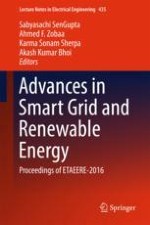This volume comprises select proceedings of ETAEERE-2016. The volume offers state-of-the-art chapters on energy management systems (EMS), renewable energy resources, micro-generation, green communications architectures and frameworks, green computing and education as well as energy-aware process optimization. The contents covers a wide variety of topics and aspects including management of renewable energy systems and environmental challenges. The contents of this volume will be useful to researchers and practicing engineers working in the areas of smart grids and renewable energy generation, distribution, and management.
